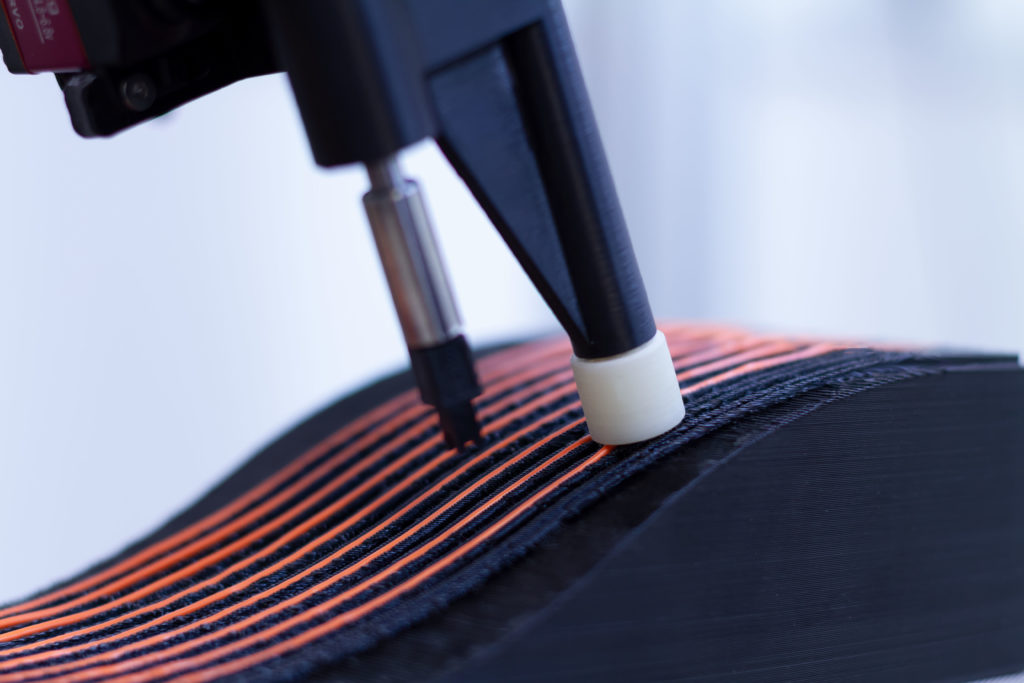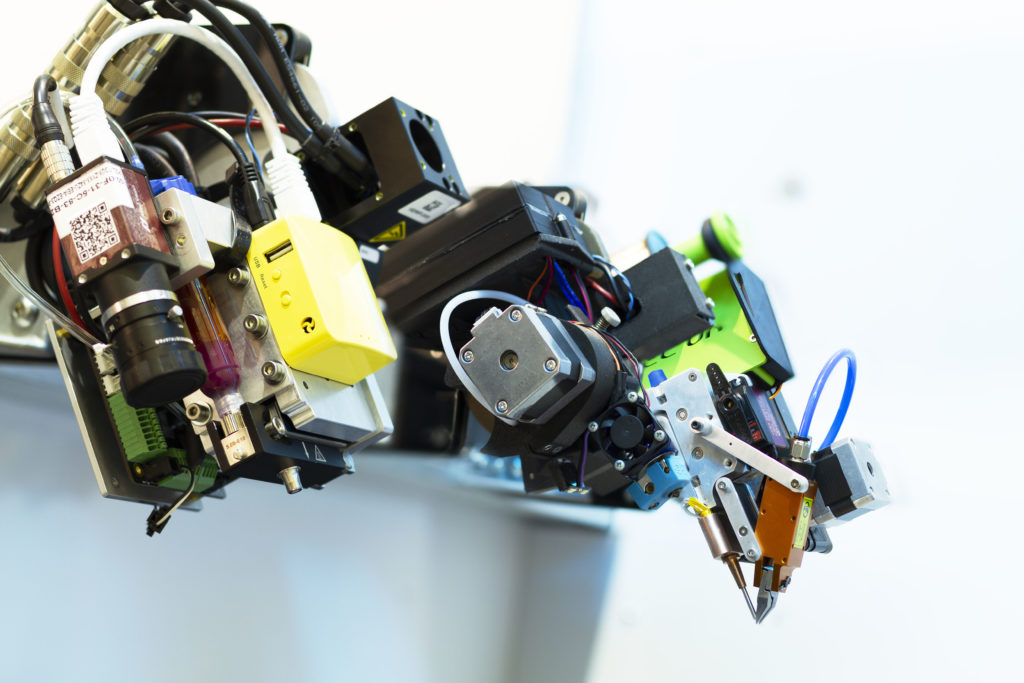Wire harness assembly has traditionally been seen as a labor-intensive step not suitable for automation. However, increasing concerns over supply chain resilience and the impact of global shocks have heightened industry and government interest in Q5D’s technology as a potential solution for automating the production of these harnesses.
Q5D develops the firmware and controls for its machines in-house, while further operations are managed by a custom implementation of Siemens NX CAD/CAM, created by Emixa. The consortium of companies has now received funding to simplify the overall workflow and user interface, a challenging task considering the wide variety of surfaces Q5D’s technology can be applied to. The diversity of operations and sequences possible adds to the complexity.
Additionally, controlling the motion stage arm is critical, as it must manage various heads that deposit different materials while moving and positioning. Ensuring this process can be repeated millions of times without error adds another layer of complexity to the system.
Q5D is collaborating with clients on various applications, such as embedding wiring in aircraft components, integrating NFC communications into objects, and wiring for car bumpers. Although gaining the trust of major automotive and aerospace industries may take time, the company is addressing a significant market, largely unchallenged by competitors. The lack of competition is surprising, especially when considering the vast potential applications, such as equipping every lamppost worldwide with sensors or enhancing internet connectivity in cars and phones through additional antennas. These advancements are increasingly likely as the demand for smarter, more connected environments grows.
The opportunity for the conformal placement of sensors and 3D printed components is substantial, yet currently, there are no complete automation solutions for many of these tasks. As the world moves towards greater connectivity and sensor integration, the necessity to equip millions of items with these technologies will escalate. This substantial market opportunity appears to be overlooked, suggesting that more attention should be directed towards this sector, anticipating more market entrants in the future.
Subscribe to Our Email Newsletter
Stay up-to-date on all the latest news from the 3D printing industry and receive information and offers from third party vendors.
You May Also Like
Further Understanding of 3D Printing Design at ADDITIV Design World
ADDITIV is back once again! This time, the virtual platform for additive manufacturing will be holding the first-ever edition of ADDITIV Design World on May 23rd from 9:00 AM –...
3D Printer Maker EVO-tech Reborn as NEVO3D — Once More With Feeling
EVO-tech was a 3D printing service and original equipment manufacturer established in 2013 and based in Schörfling am Attersee, Austria. The company produced high-quality material extrusion systems featuring linear bearings,...
3D Systems Brings 3D Printed PEEK Cranial Implant to the U.S. with FDA Clearance
For more than 10 years, 3D Systems (NYSE:DDD) has worked hand-in-hand with surgeons to plan over 150,000 patient-specific cases, and develop more than two million instruments and implants from its...
CDFAM Returns to Berlin for Second Annual Symposium
The second CDFAM Computational Design Symposium is scheduled for May 7-8, 2024, in Berlin, and will convene leading experts in computational design across all scales. Building upon the first event...

































